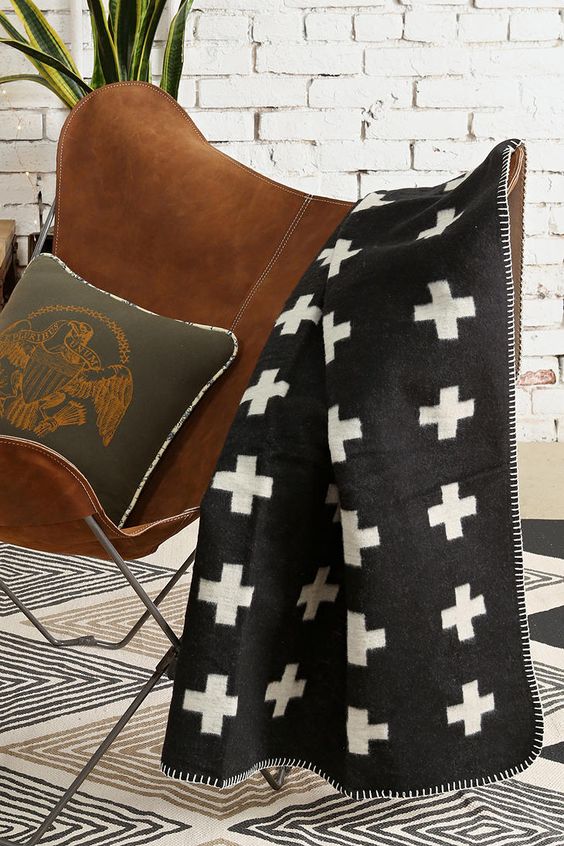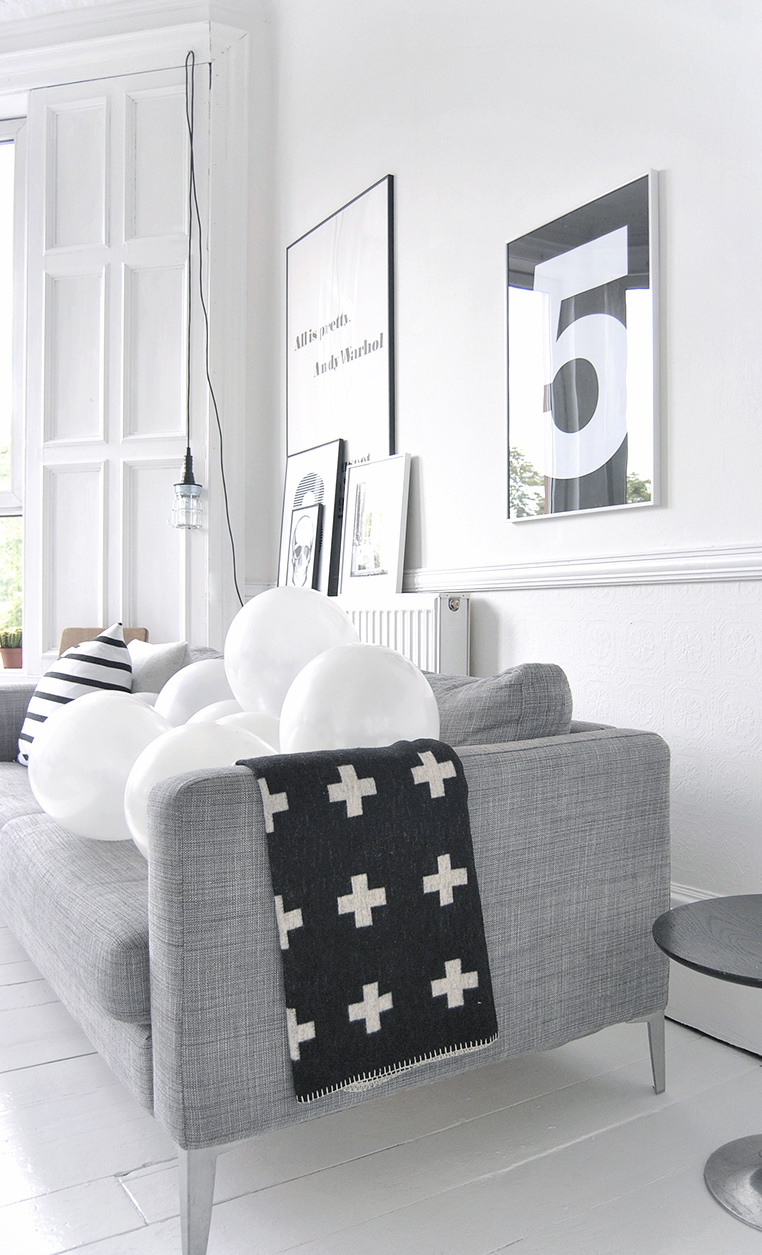
Inspirations
Explore the elevated life in the mountains. This content debuted in 2015 with Alpine Modern’s printed quarterly magazine project.
The Weavers of Lapua
More than a hundred years ago, the great-grandfather of Jaana Hjelt’s husband, Esko, opened a wool and felt boot factory in Lankilankoski, Finland, where the Ostrobothnian winters are freezing cold.
More than a hundred years ago, the great-grandfather of Jaana Hjelt’s husband, Esko, opened a wool and felt boot factory in Lankilankoski, Finland, where the Ostrobothnian winters are freezing cold.

Still in family hands, Lapuan Kankurit today values responsible and environment-friendly processes and pure natural materials. Multifunctionality of their products is important to owners and forth-generation weavers Jaana and Esko Hjelt. In their book, blankets can also be tablecloths or space dividers. Their high-quality textiles are made to bring beauty and happiness into a family's everyday life for generations.

Lapuan Kankurit's fine wool products weave together the story of Finnish handicraft traditions, innovative techniques, and the artwork of top Scandinavian designers. And so the legend continues.
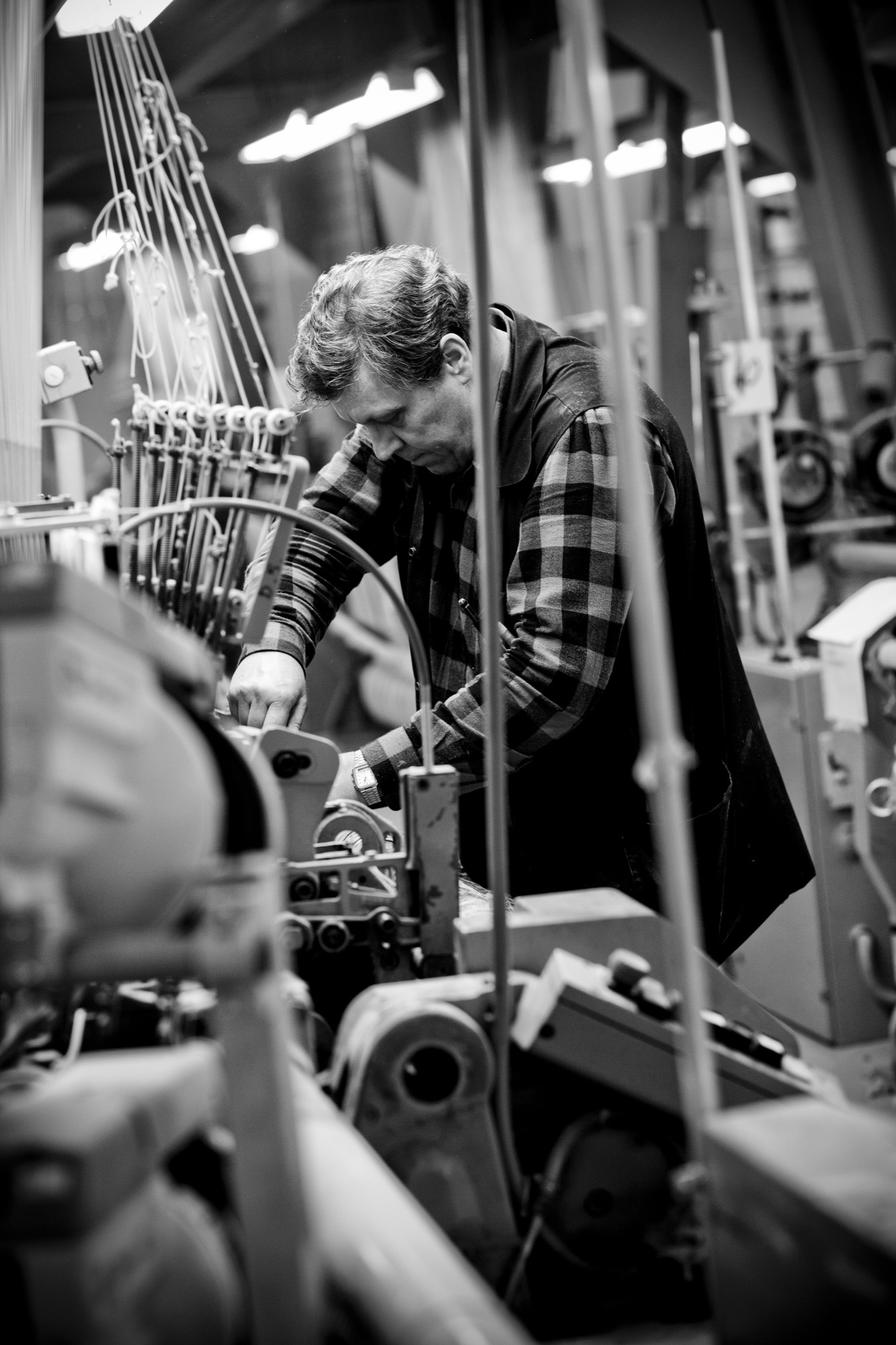
A Conversation with Jaana Hjelt
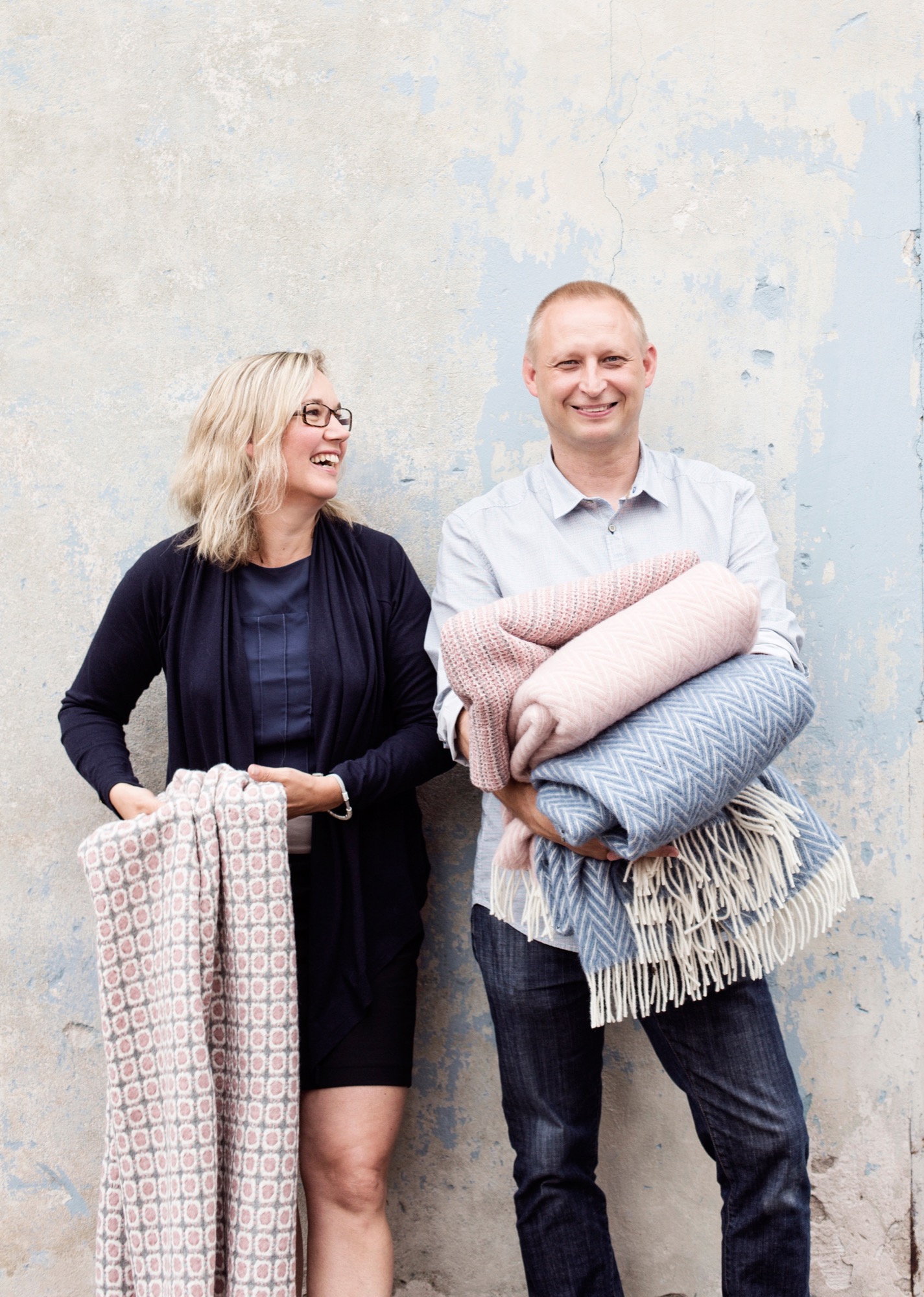
Born: 1968 in Lapua, Finland.
Lives: After studying and working in other cities for ten years, I came back to Lapua.
Work: I do what I love. I run a weaving mill—Lapuan Kankurit (“Weavers of Lapua”)—with my husband, Esko.
Fun: I love to just stay at home with the children, to spend time without any timetables. But we all also love to travel and meet new people. That’s what I do for fun and for work!
Working on right now: Now it’s the “exhibition season,” which means traveling around Europe and attending fairs. It’s great to show our latest collection and hear the feedback.
Favorite place in the world: Home. This may sound boring, but because of my busy life as an entrepreneur, weekends at home are the best. Saturday evenings at home with family: good food, sauna, sitting, and talking with the kids about all the joys and sorrows of the past week.
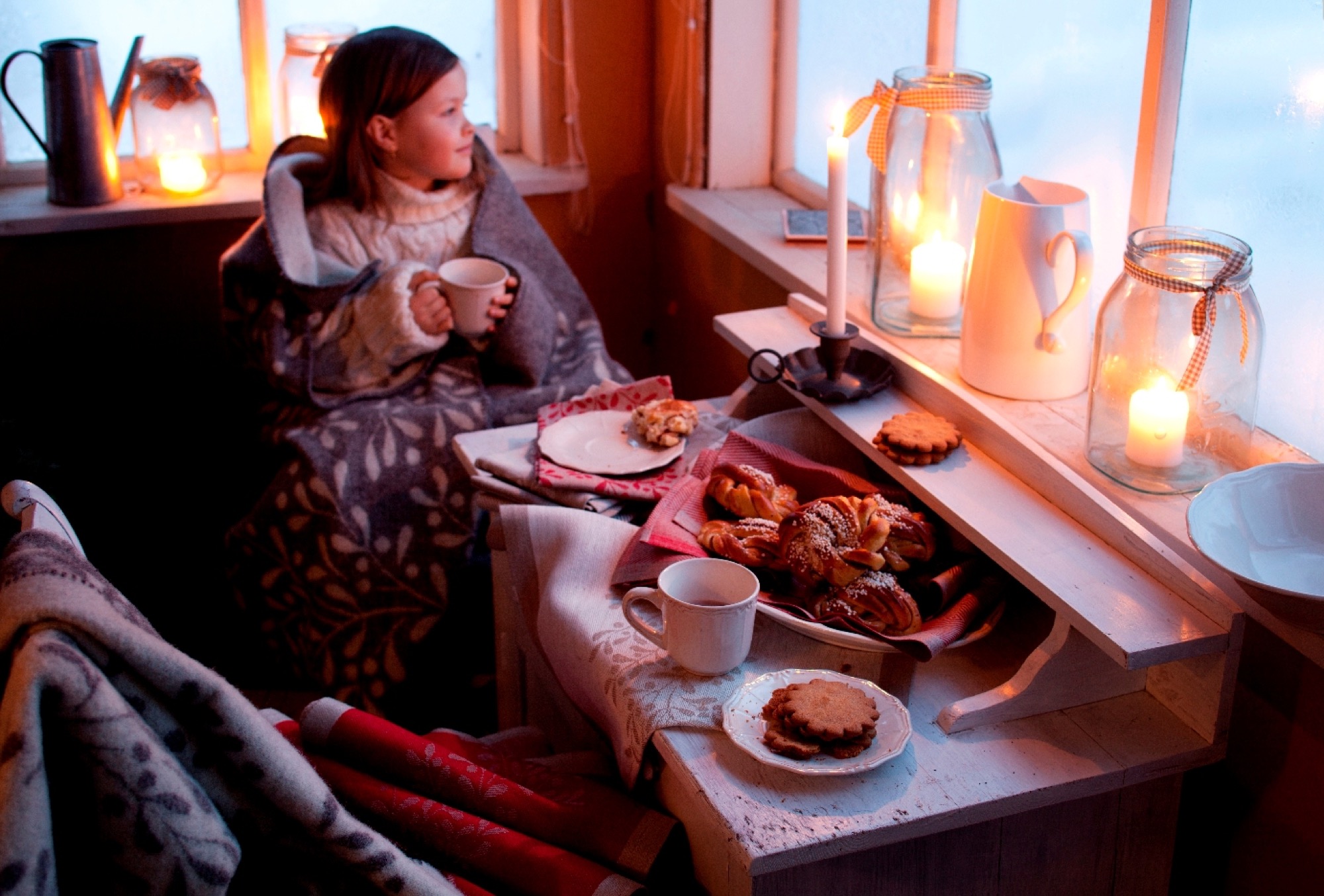

Motto: Now it’s a perfect moment.
Inspiration: My husband, Esko. It’s great to have someone next to you who is seeking innovations. He always gets ideas for textiles, and we share the same passion to create something new and beautiful for homes. Together with our designers, we make a great team.
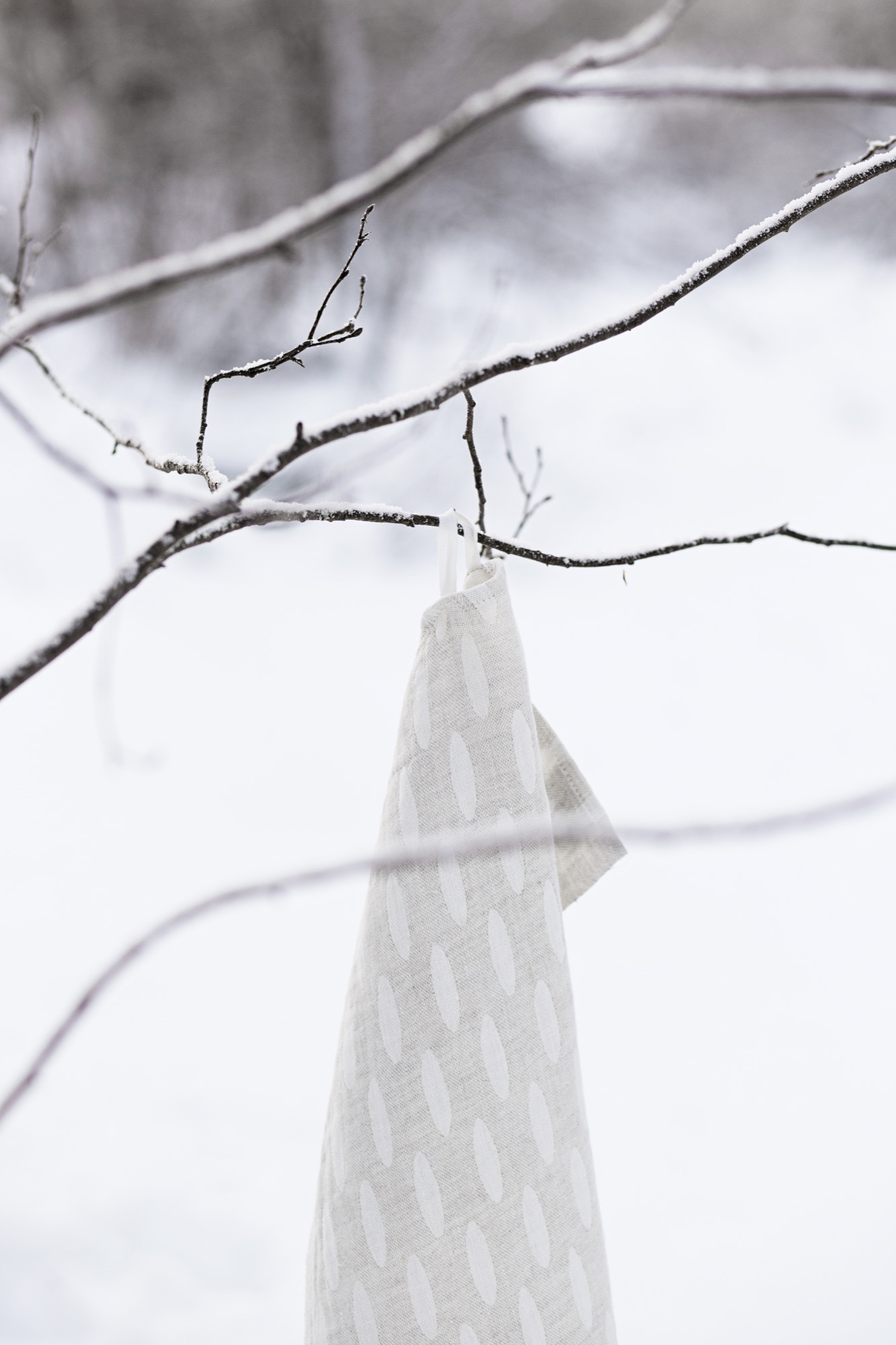
Treasured possession: My grandmother’s handcrafted textiles.
Never leaves the house without: A smile. What else do you need?
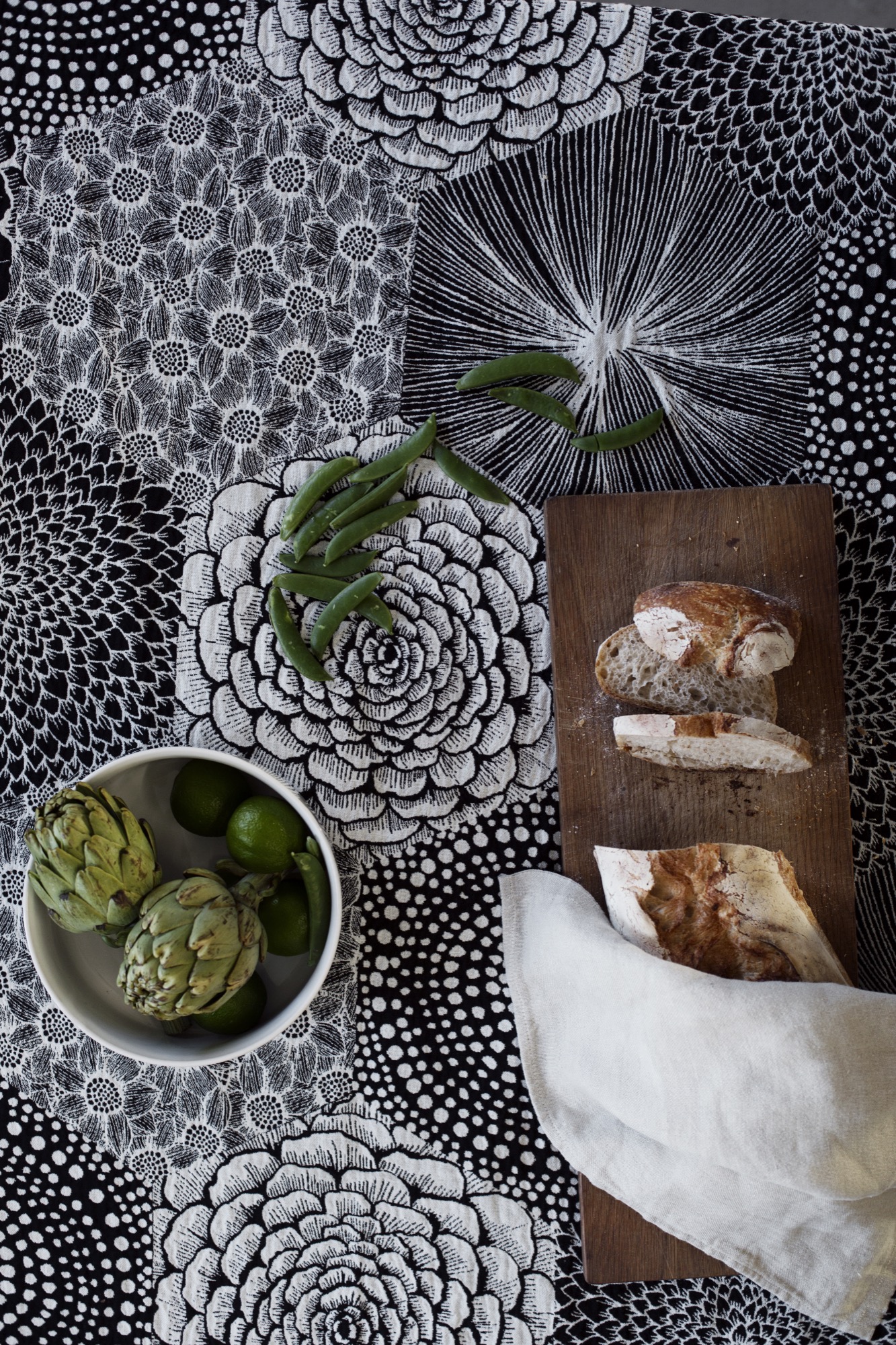
What’s next for Lapuan Kankurit: We also would like to expand a bit more from home textiles towards apparel . . . Our designers have already made some great bags. I just love them and can’t wait for production to start.
See the beautiful products Jaana and Esko Hjelt are weaving at lapuankankurit.fi. We also sell select Lapuan Kankurit products online and at the Alpine Modern Shop on Pearl Street in Boulder. △
Cozy and Knit
Winter interiors: Bring warmth into your home with tufted or knit accessories and furniture
Coziness and chunky textures are not just for your grandma’s homemade afghans anymore. These tufted or knit accessories and furniture options have all the warmth of a storybook cottage, but they couldn’t be more modern.
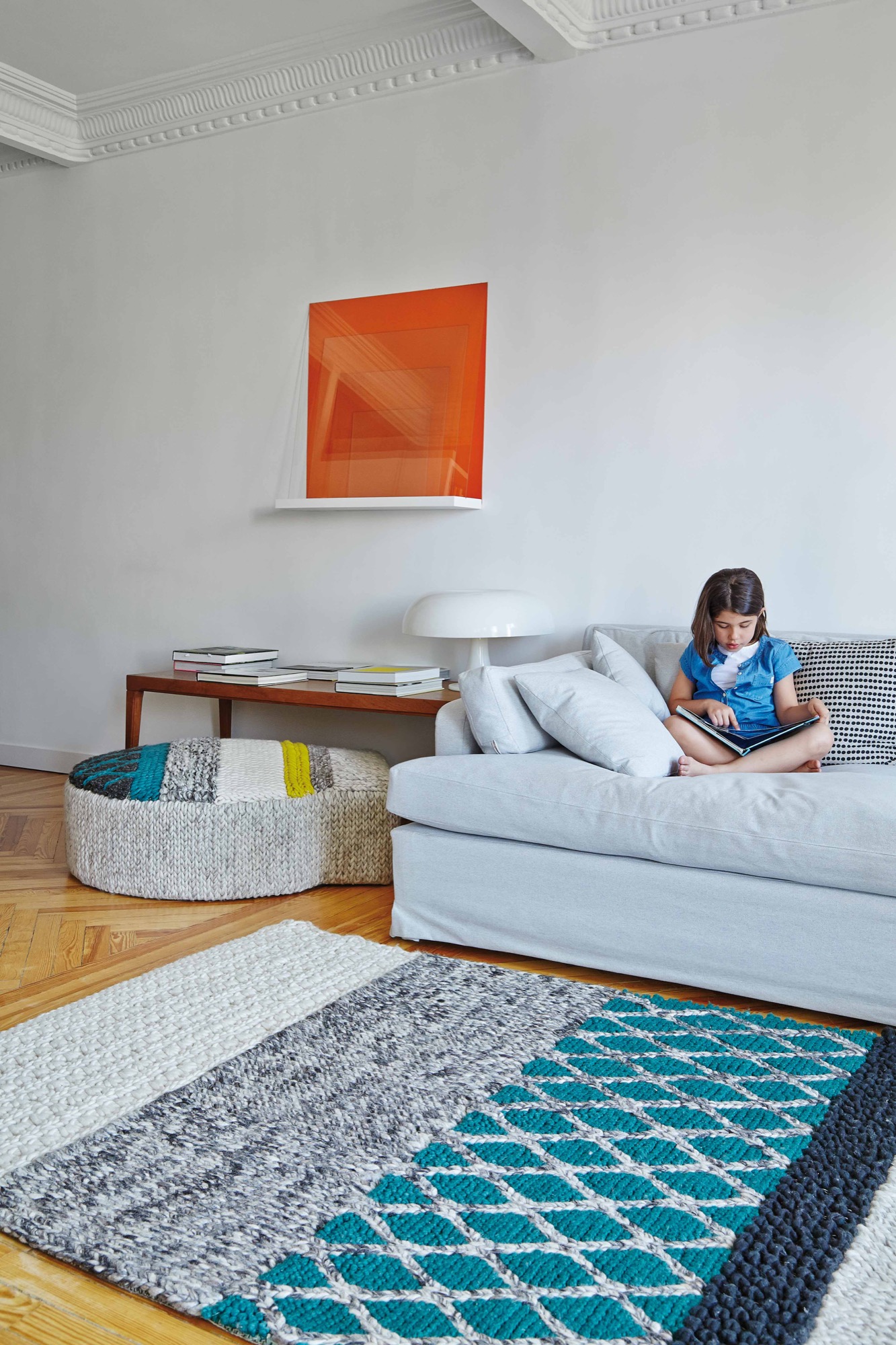
Sculptural skein seats
Claire Anne O’Brien’s stools, poufs and chairs are knit into giant skeins and then woven into a variety of loops, donut shapes and traditional patterns. The resulting seats are both whimsical and chic, surprising in their reinvented use of knitting.
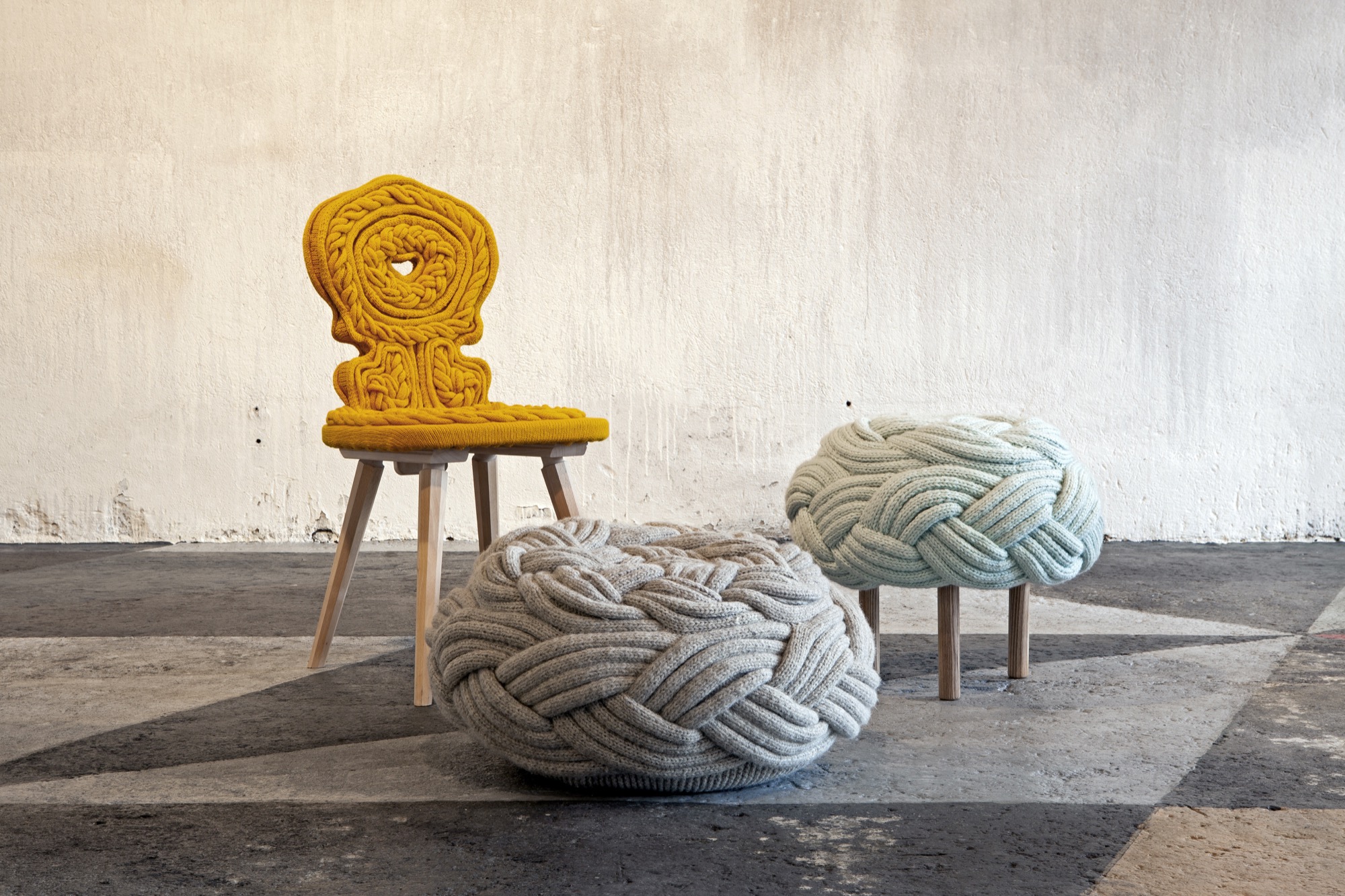
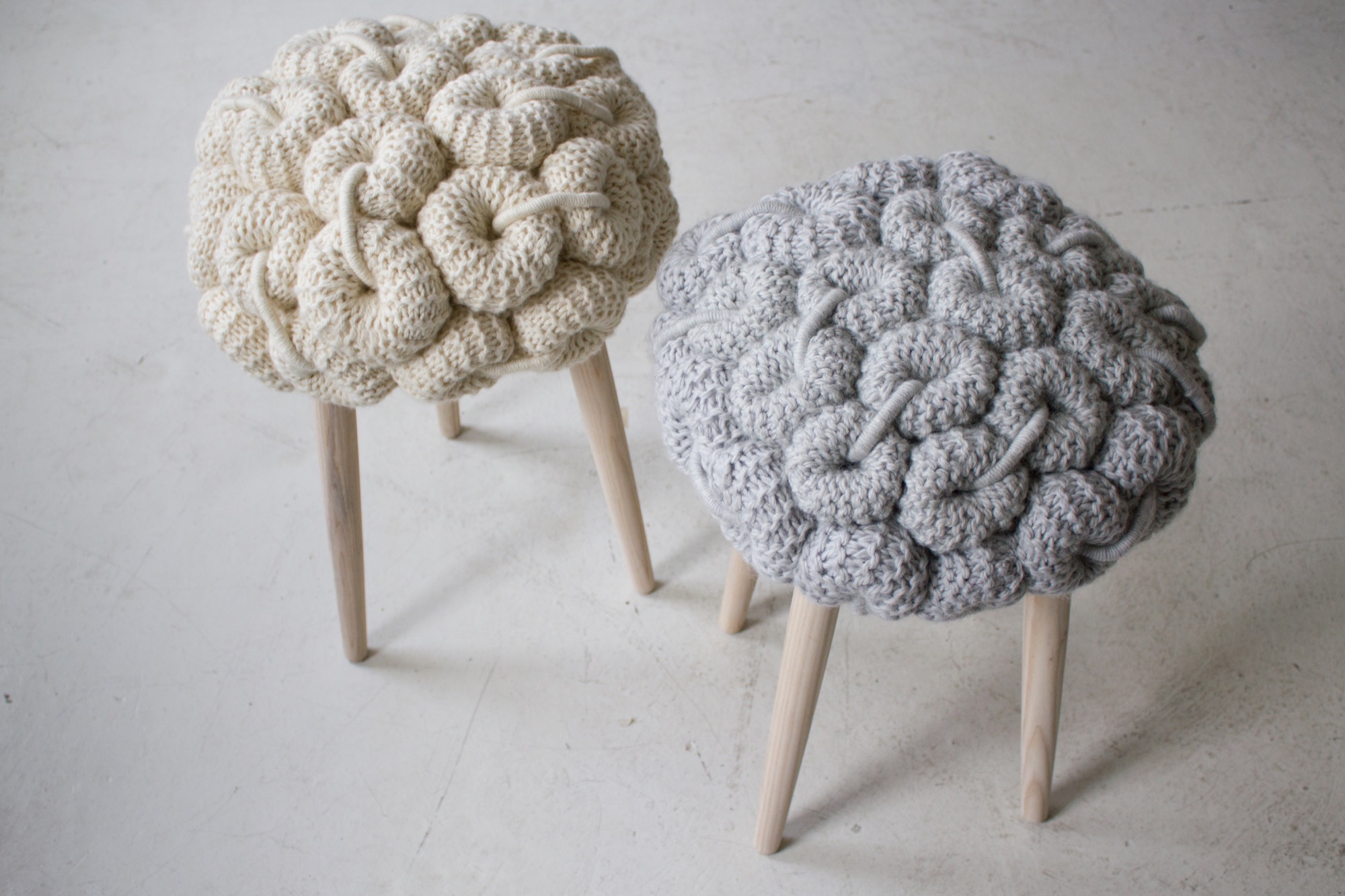
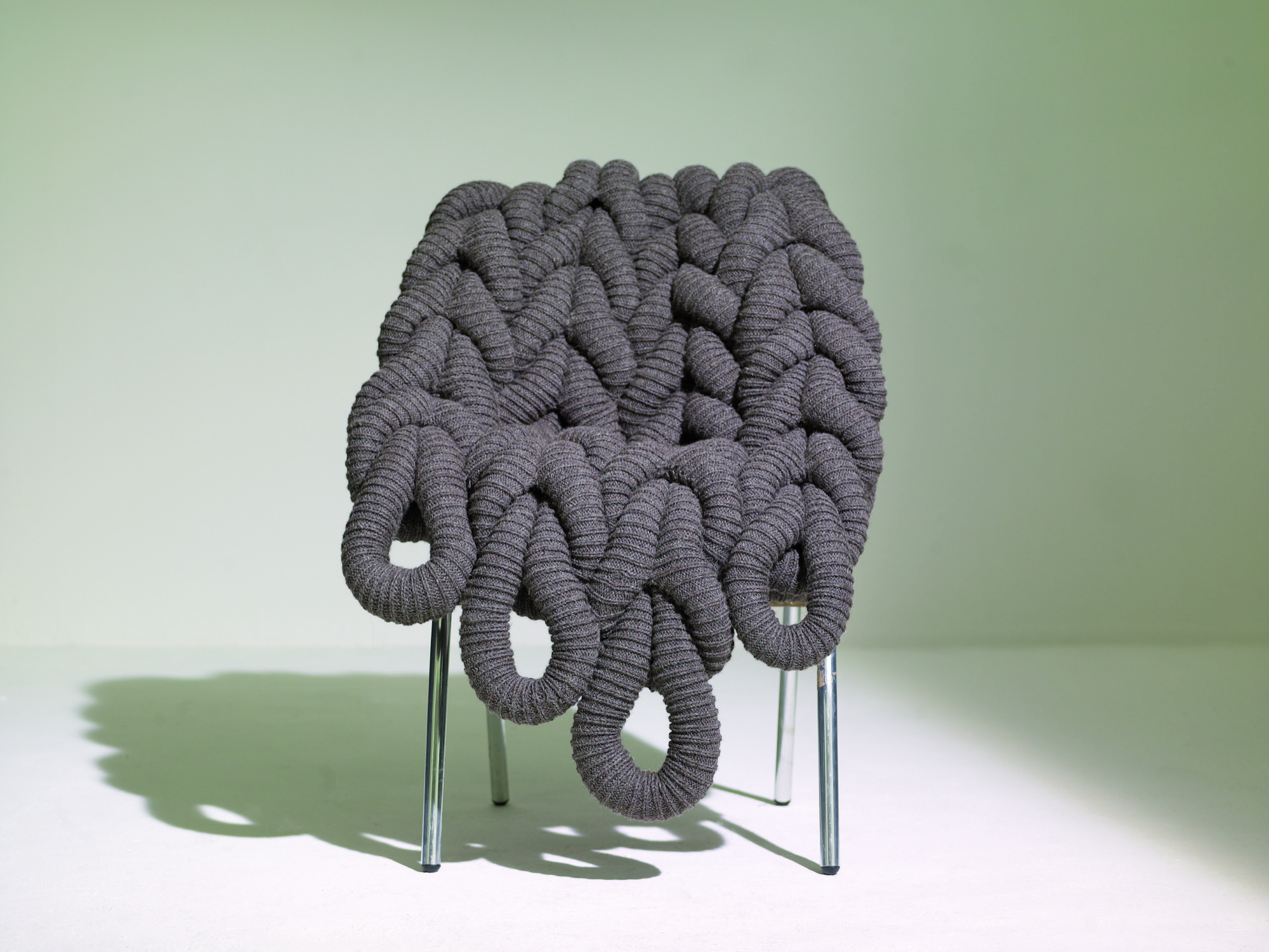
Ruched beds and seating
Ligne Roset’s Ruché Collection features beds and seating covered in an even, square, ruched design, with spare wooden frames. The soft, quilted fabric complements the simple legs, melding a traditional sewing pattern with modern structure.
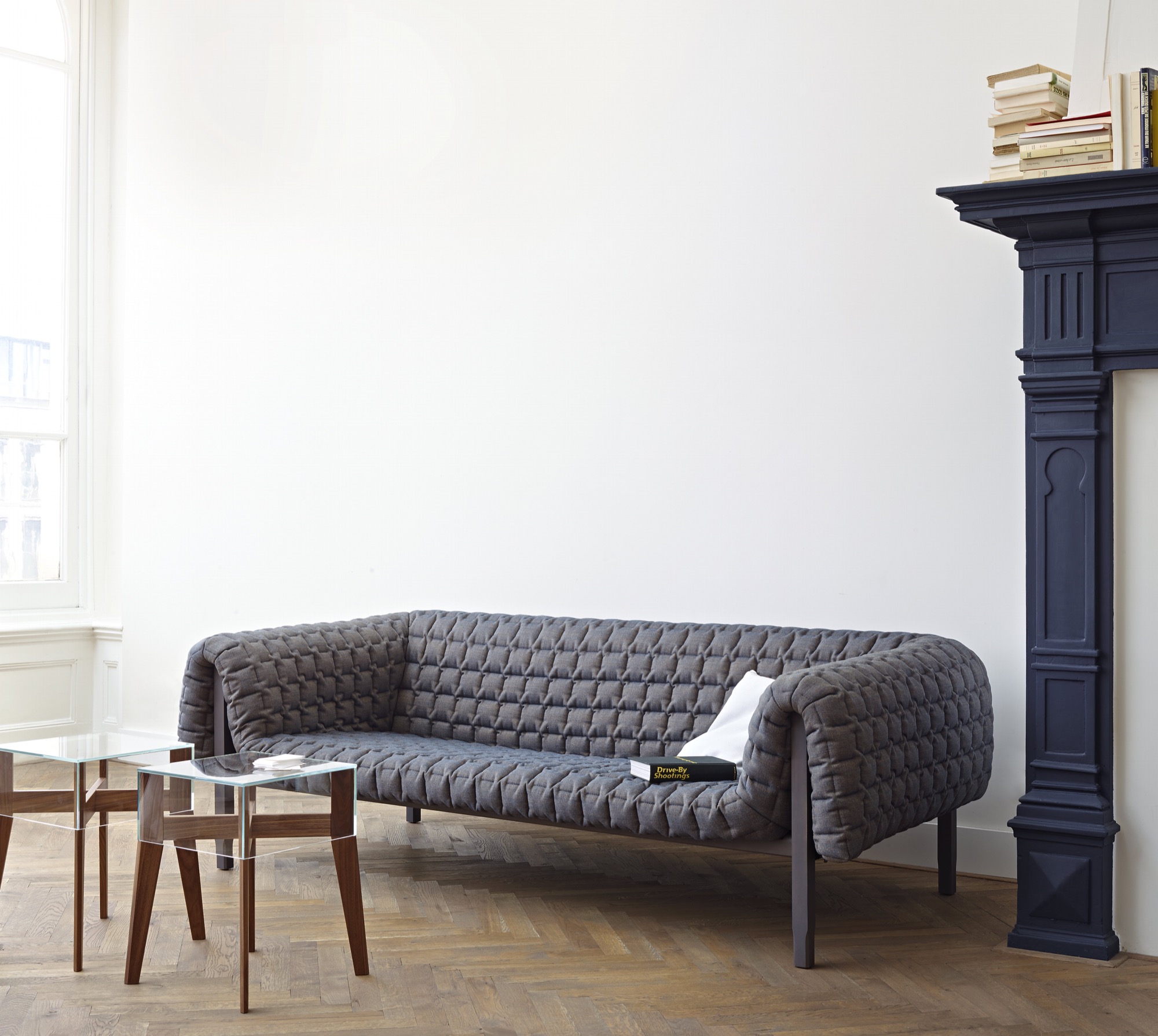
Giant hot-water-bottle shapes
Playing with size and intention in the following rugs and poufs add both warmth and whimsy to modern spaces. The unexpected hot-water-bottle shapes of the Mangas Collection from GAN brings together heritage and modernity.
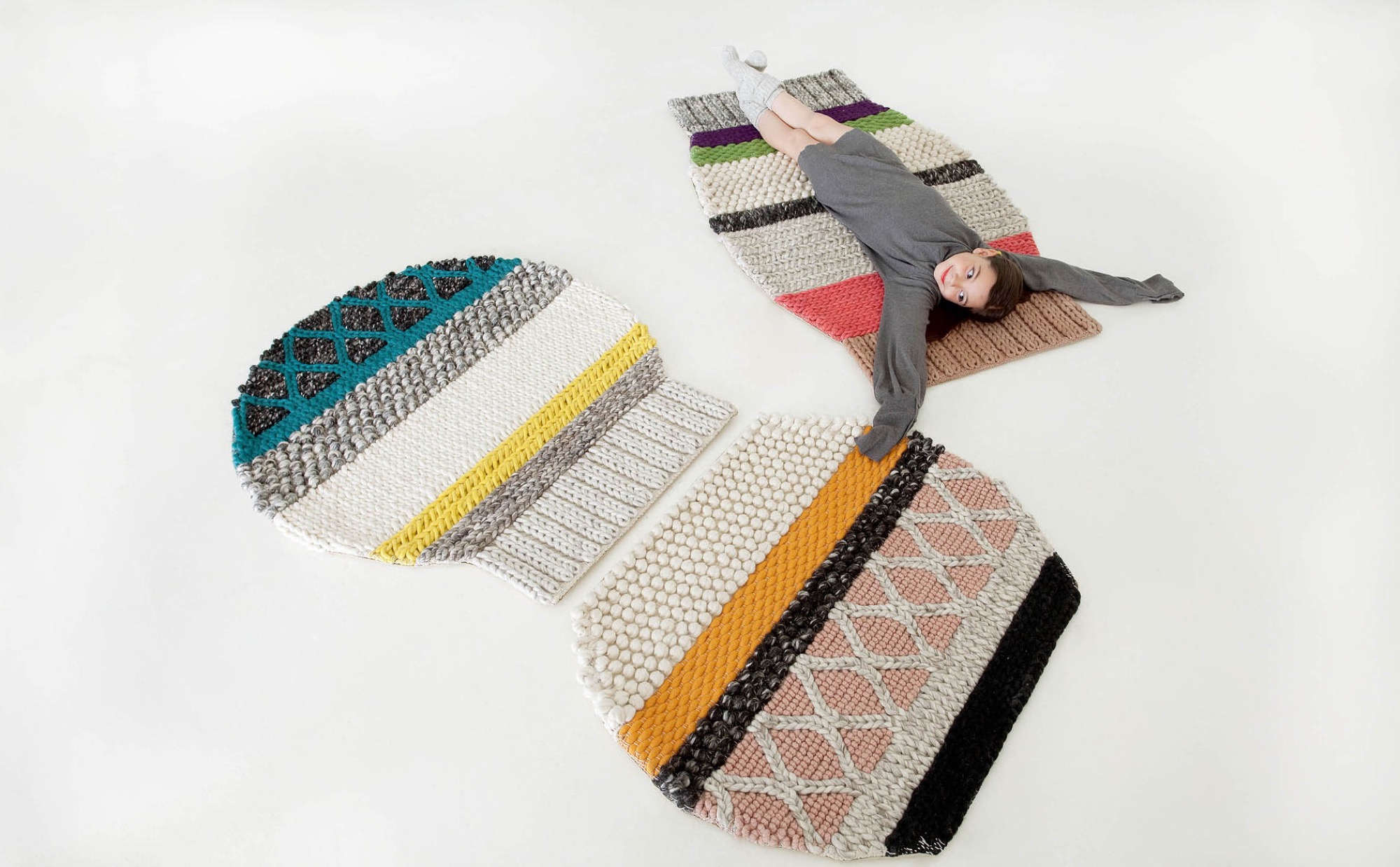
Knit bean bags
Zilalila’s Nest knitted bean bags are just that… a cozy nest to cuddle into. The knitted construction evokes another era, but the shape and feeling are wholly new and sophisticated—enriching the modern living room.
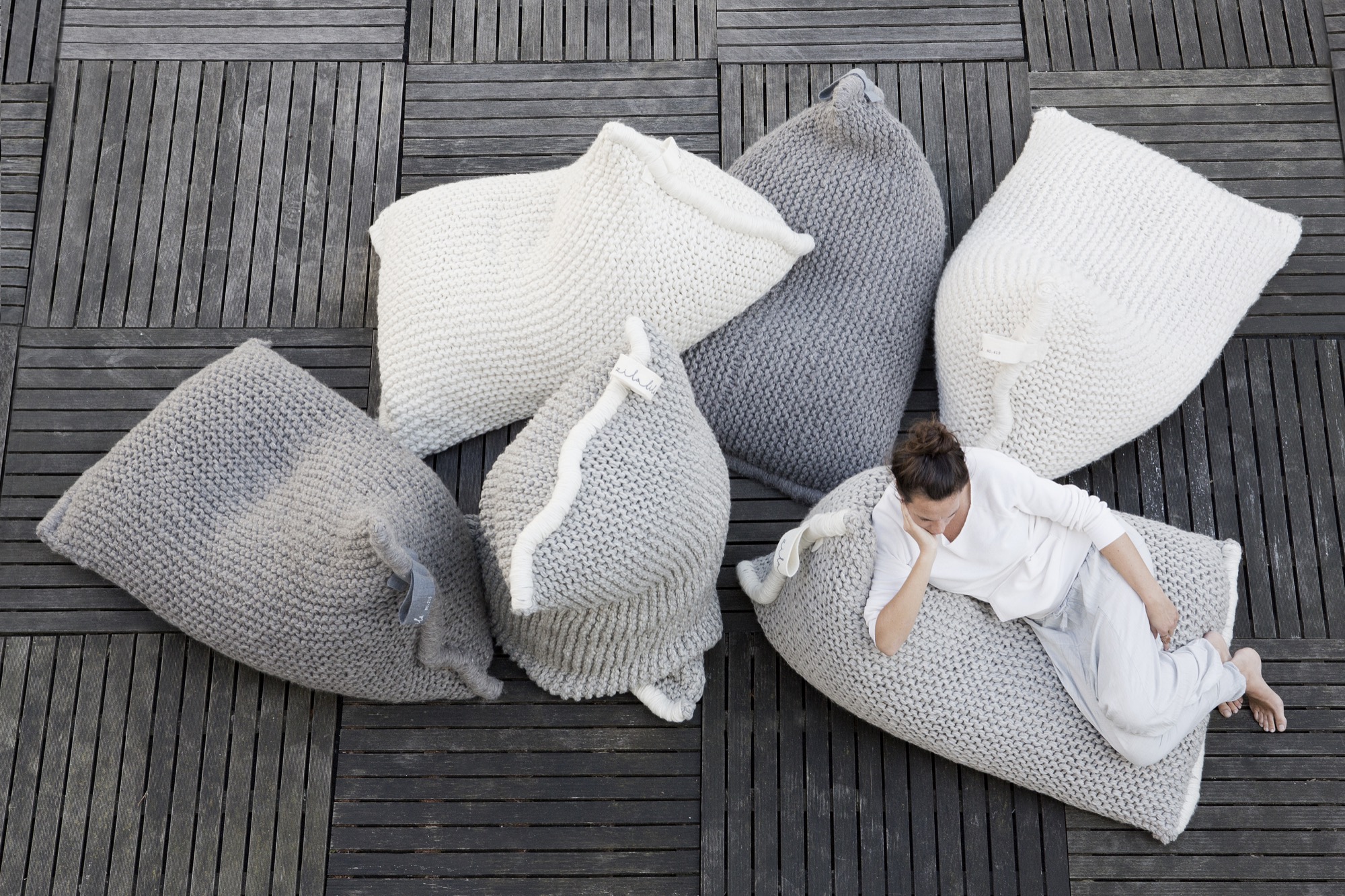
Doily rugs
Hooked Design’s doily rugs surprise by transforming something typically seen on an armrest and enlarging it for the floor.
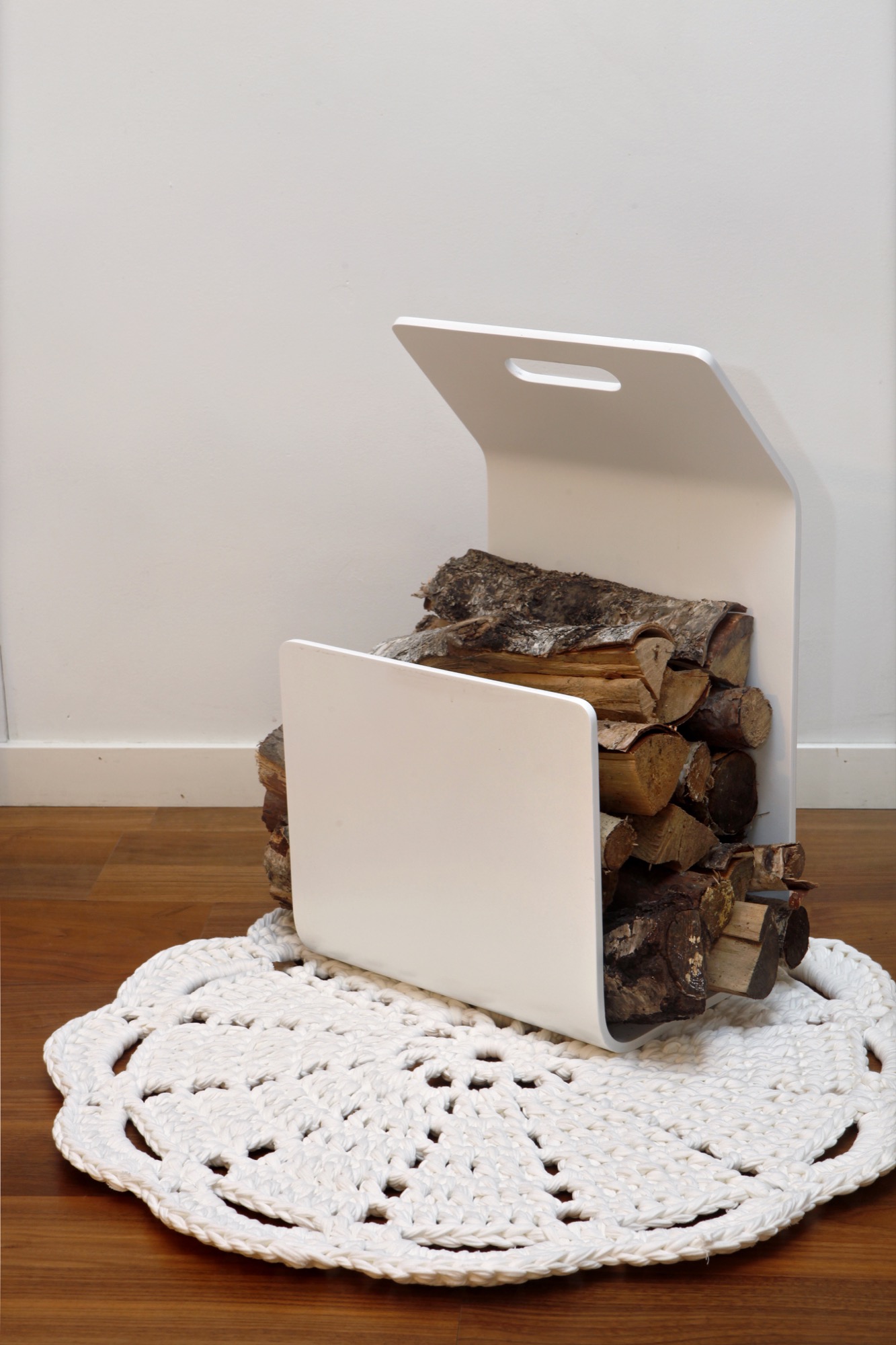
Sweater-sleeve rugs
Christien Meindertsma’s Aran rug is like an oversized sleeve of your favorite fisherman sweater, inviting you to relax right into the cables.
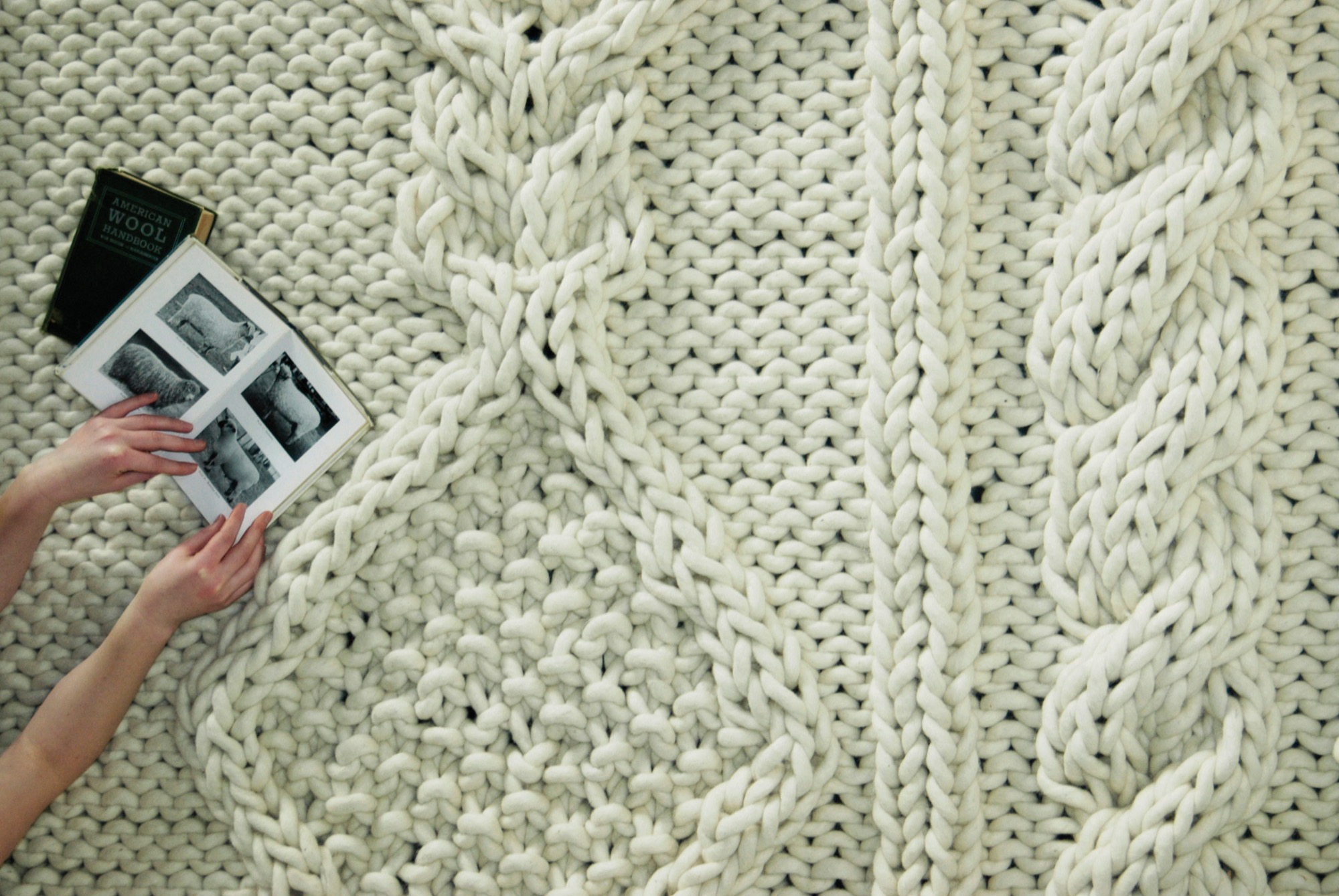
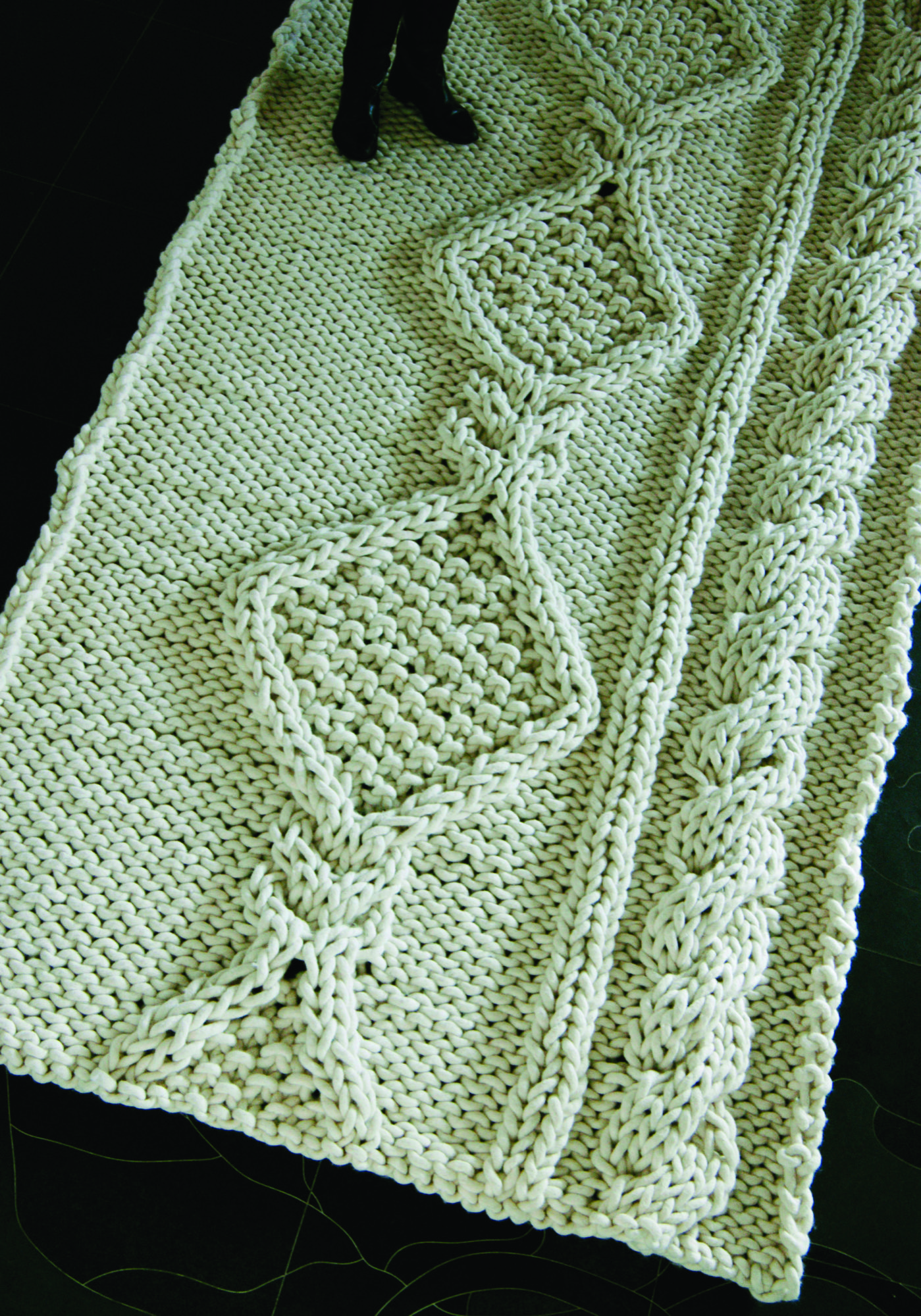
Stories with Granny under the throw
Finally, the knitted Granny Pendant of Casamania… the ideal light to sit under, while reading your favorite book, cuddled up under Serena and Lily’s Henley Wool Throw, the modern version of your grandma’s afghan. △
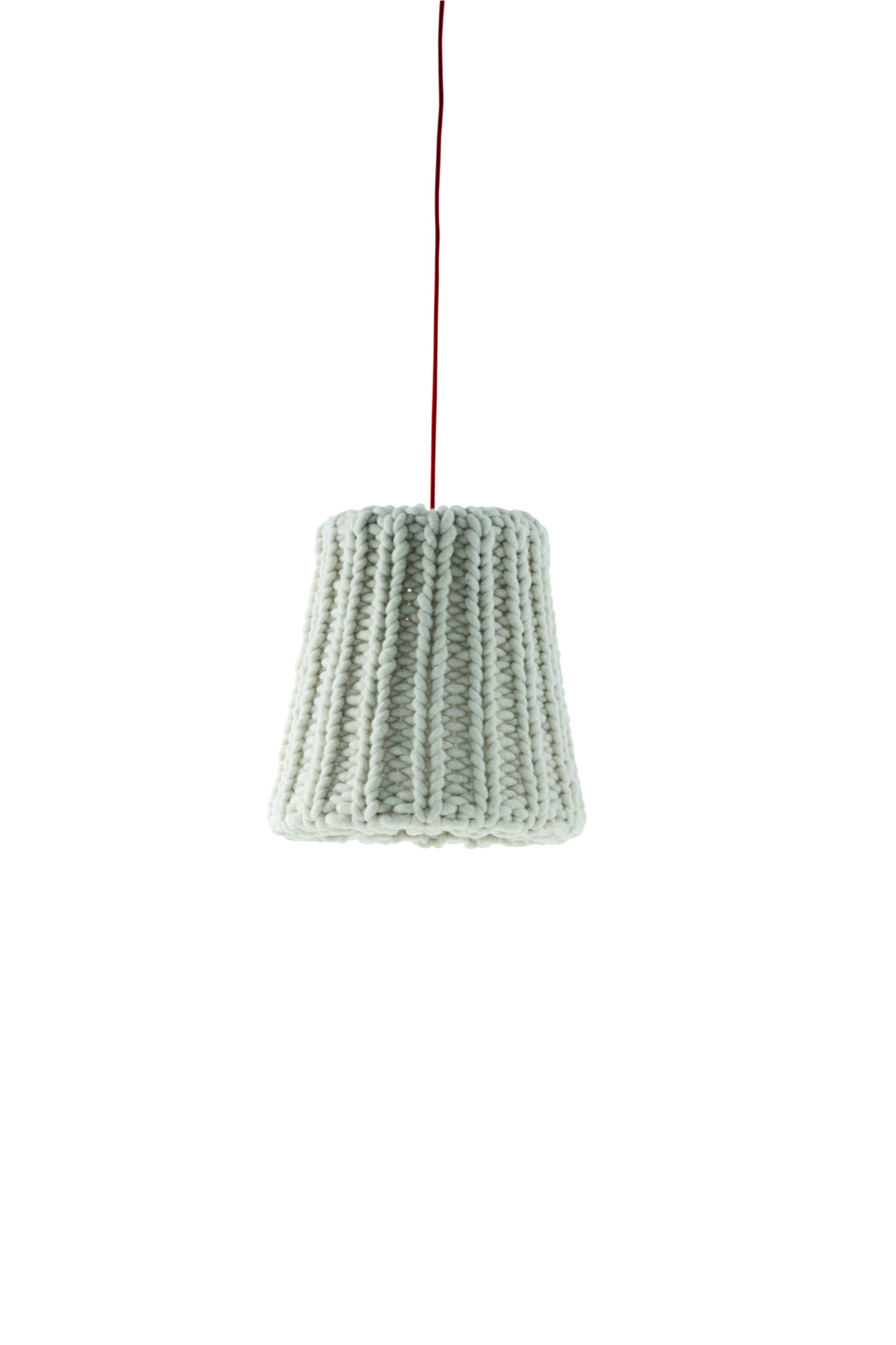
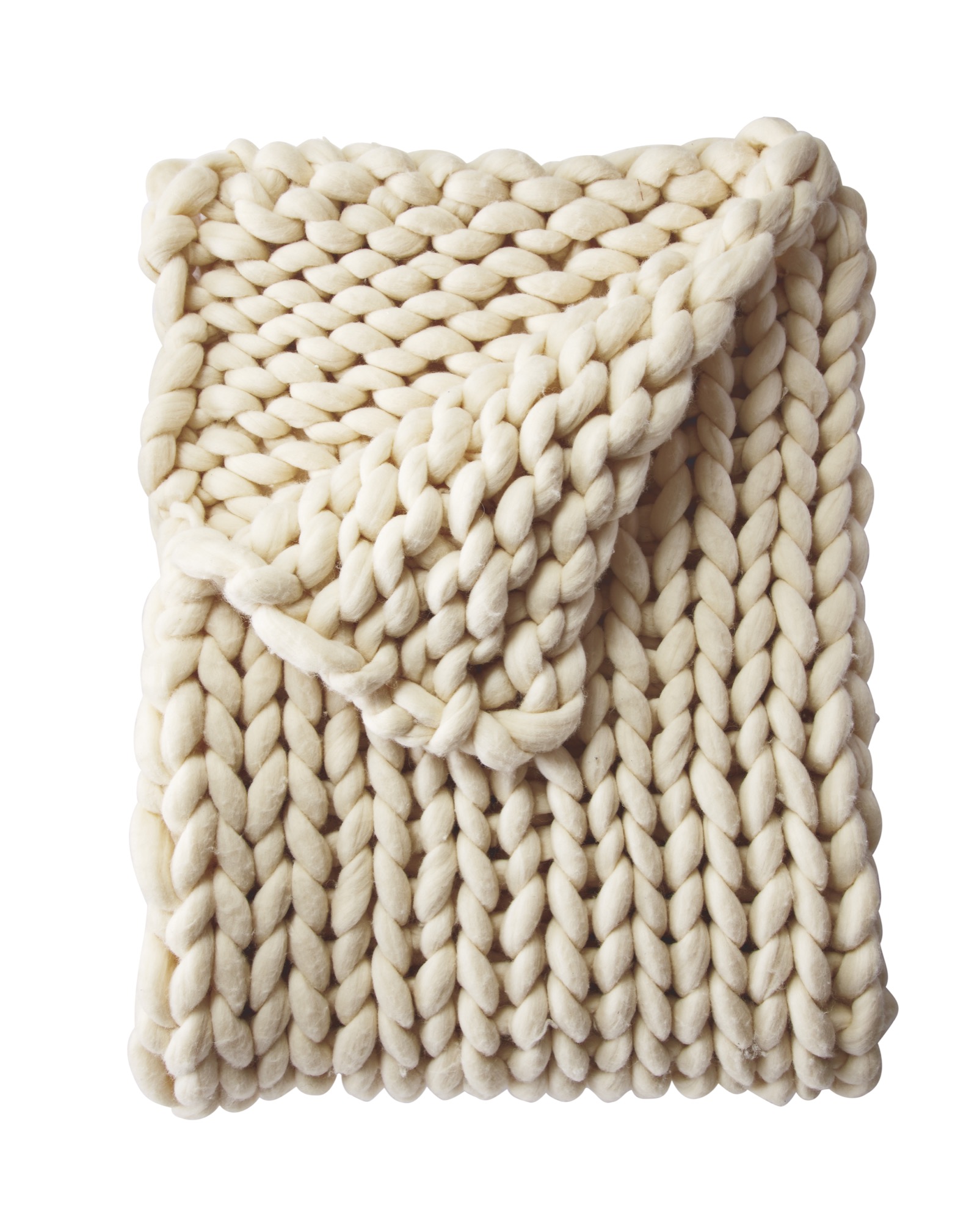
This snuggly roundup is curated by our interior design contributor Jennifer Rhode. Meet the Boulder interior designer and contributor.
She Felt Beautiful
Swedish designer Pia Wallén talks about her iconic Crux Blanket and the bold creations she makes from wool felt
Pia Wallén, who was born in Umeå, Sweden, and now lives and works in Stockholm, creates bold, minimalist objects from her signature wool-felted materials.
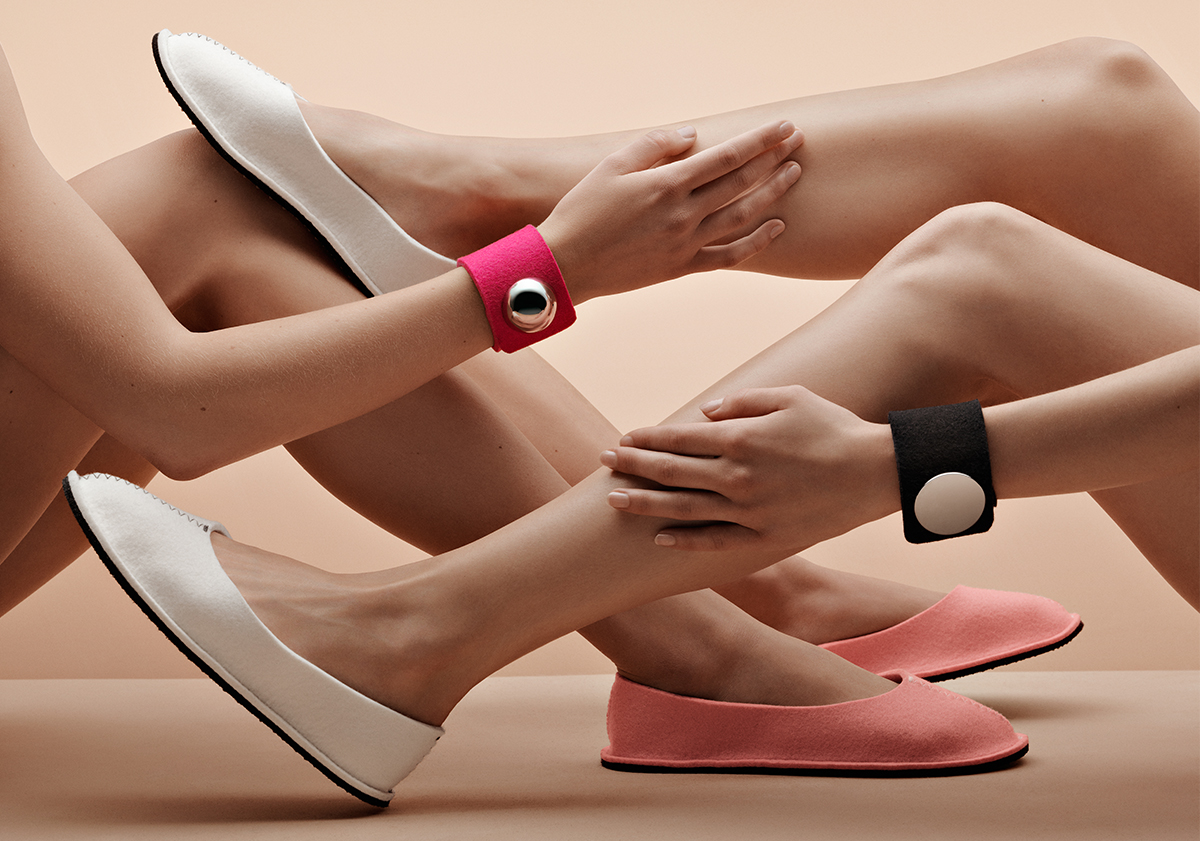
Wallén, who studied fashion design at the Beckman’s College of Design in Stockholm in the mid eighties, made an international breakthrough with her own namesake brand in the early nineties. Over the years, she has collaborated with IKEA and brands such as the Swedish design label Asplund and Italian leather manufacturers Arte & Cuoio.
Inspired by traditional Swedish folk craft techniques and patterns, her bold, minimalist designs also have a dramatic modern edge. This juxtaposition of ancestral craftsmanship and her unmistakeable, contemporary—yes, futuristic—designs have become Wallén’s trademark.

Her already iconic work is displayed in the permanent collections of Sweden’s National Museum of Fine Arts, the Röhsska Museum for Design, Fashion and Decorative Arts in Gothenburg, and the Museum für Angewandte Kunst in Cologne, Germany. She has participated in exhibitions around the globe, including at the Centre Pompidou in Paris and Victoria & Albert in London.
One our favorite Pia Wallén designs at Alpine Modern is the Crux Blanket, which the designer designates her “icon.” In Swedish folk art tradition, the cross (crux in Latin) is a strong symbol for hope, a meeting point of heaven and earth, plus, the designer says German artist Joseph Beuys (1921–1986) was also an influence. Introduced in 1991, the Crux Blanket has meanwhile become a classic in contemporary Swedish design history. Fostering mutually meaningful and lasting relationships with her manufacturers is very important to Pia Wallén. The original blanket is still produced by the same small family weavers in southern Sweden, using the finest wool and traditional Scandinavian felting methods.
The traditional weaving and felting process takes time, which is why supply of the handcrafted wool object is limited. Thus, Pia Wallén has introduced a new version of her treasured paragon: the new Cross Blanket in pure organic cotton, produced in collaboration with a Swedish company that manufactures in Peru.
We recently caught up with the designer to talk about her brand, her inspirations, and about life.
A conversation with Swedish designer Pia Wallén

What is your vision for the brand that bears your name?
My ambition is to create a deeper meaning, content, sympathy, and respect in the relation between the object and the user.
Your collections include accessories, jewelry, and interior objects. How do you decide what products to make?
It’s a combination of fulfilling my personal needs, ideas, and a curiosity for developing my new products as well as my old ones. It’s a lot like researching. It’s important for me to find and develop a good relationship with my manufacturers, and together with them create new techniques and products.
Your recent lines of accessories and jewellery have joined objects that combine felt, metal, leather, lacquer, plastic, and other materials in striking new ways. How do you choose and source your exquisite materials?
I’ve specialised in wool-felted materials and that is the main material throughout my collections. I’m inspired by materials from different cultures as well as by new, futuristic materials.

What does quiet design mean to you?
Quiet design is discrete and anonymous.
What’s your legacy (thus far)?
That my designs are objects to like, to sympathize and share a life with. My classic objects, like the Slippers and the Crux Blanket, have been in the collection for over 20 years, and I hope for many years to come.
What’s your favorite place in the world?
Paris, it’s like a second home for me.
What does “home” mean to you?
Home is where I nourish.
What’s most important to you in life?
Love and health.
When are you happiest?
When I exceed the expectation of my creations.
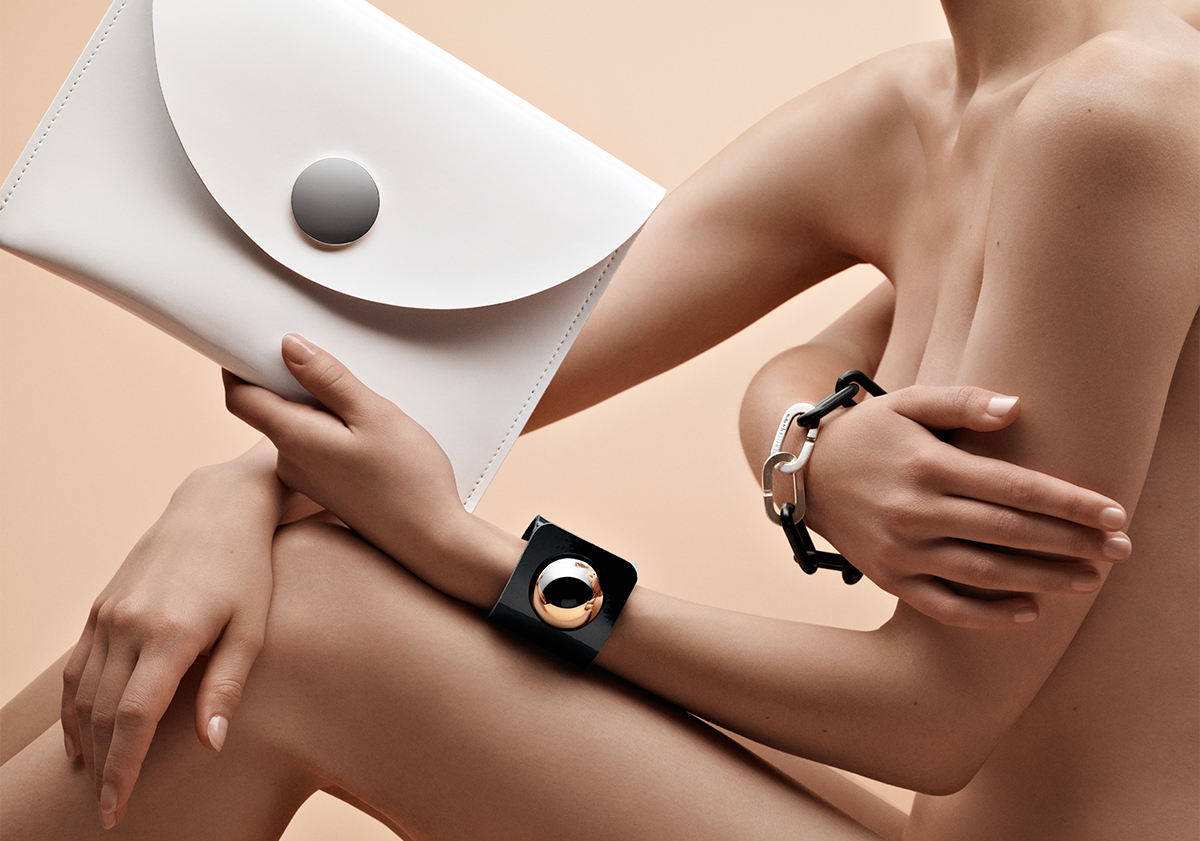
Who is your design icon, and what do you admire about her or him?
The artist Eva Hesse, for her work and life—a pioneer for female art. And also the artist Meret Oppenheim; she has influenced some of my work.
What are you working on these days?
Currently, I am working with the exhibition “Shapes of Fashion—Nordic Artwear” for the Textile Museum in the south of Sweden. It’s a continued work of my Capes Project, which started in 2015. △

